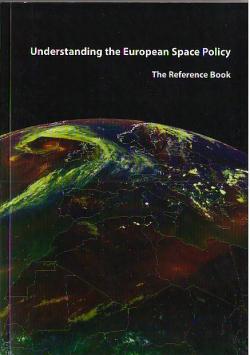Understanding the European Space Policy: The Reference Book
Negli ultimi anni è cresciuta l'attenzione europea al settore spaziale. I sistemi spaziali hanno dimostrato di essere uno strumento affidabile a sostegno di varie politiche europee, tra cui quelle relative a sicurezza, ambiente, clima, salute, sviluppo sostenibile, tecnologia dell'informazione e politica estera. Il crescente interesse europeo nelle attività spaziali è evidenziato in relazione a tre aspetti principali: politici, strategici, economici e sociali. Il manuale risponde a tre importanti domande: Perché l'Europa è interessata al settore spaziale? Qual'è il ruolo dell'Unione europea nel settore spaziale? Come viene utilizzato lo spazio in Europa? L'approccio è accademicamente rigoroso ma presentato in una forma accessibile, rispettando comunque la complessità dell'argomento "spazio".
Manuale preparato nell'ambito del progetto C-Space (Conditions for Space Policy and related Action Plan Consolidation in Europe), condotto dalla Fondation pour la recherche stratégique (FRS) insieme a Centre national de la recherche scientifique (CNRS), Romanian Space Agency (ROSA), Swedish Defence Research Agency (FOI), Istituto affari internazionali (IAI), Royal Aeronautical Society (RaeS), e finanziato dal settimo Programma quadro della Commissione europea.
1. Why is Europe Interested in the Space Domain?
1.1. Political and Strategic Aspects, p. 12
1.1.1. EU in the international context
1.1.2. R&D as an identity driver for the European Union
1.1.3. Security and independence
1.2. Economic Aspects, p. 19
1.2.1. Industrial performance
1.2.2. Market potential
1.2.3. Wider socio-economic impact
1.3. Societal Aspects, p. 23
1.3.1. How space contributes to the information and knowledge society
1.3.2. Societal needs and space answers
1.3.3. How is space influencing culture
2. What is the Role of the EU in the Space Domain?
2.1. Existing Strengths at the Root of the European Space Policy, p. 31
2.1.1. ESA programmes
2.1.2. European space programmes
2.2 Elements Contributing to the European Space "Engine", p. 34
2.2.1. Member states' programmes
2.2.2. Cooperation programs
3. How Space is Being Used in Europe?
3.1. How is Europe Taking Advantage from Space?, p. 40
3.1.1. Space services and end-users
3.1.2. Other applications: science, exploration, security and defence
3.2. Players and their Organization, p. 50
3.2.1. European institutions
3.2.2. Industry
3.2.3. National space agencies
3.3. Ensuring Sufficient Resources for a Sound European Space Policy, p. 63
3.3.1. The EC budget
3.3.2. ESA budget
3.3.3. National budgets - national support for European space
4. Challenges and Opportunities
4.1. Thematic Challenges, p. 74
4.1.1. European challenges
4.1.2. International challenges
4.2. Cross-Cutting Challenges, p. 83
4.2.1. Governance and funding
4.2.2. ESA-EC perspective
4.2.3. EU-MS perspective
4.2.4. Civil-military perspective
4.2.5. Public-private perspective
4.2.6. Improving the sharing of data and results
4.2.7. Ensuring a sustainable funding
5. Appendix
Societal needs and space, p. 96
EC R&D projects, p. 99
Reference documents, p. 102
Endnotes, p. 105
Acronyms, p. 106




